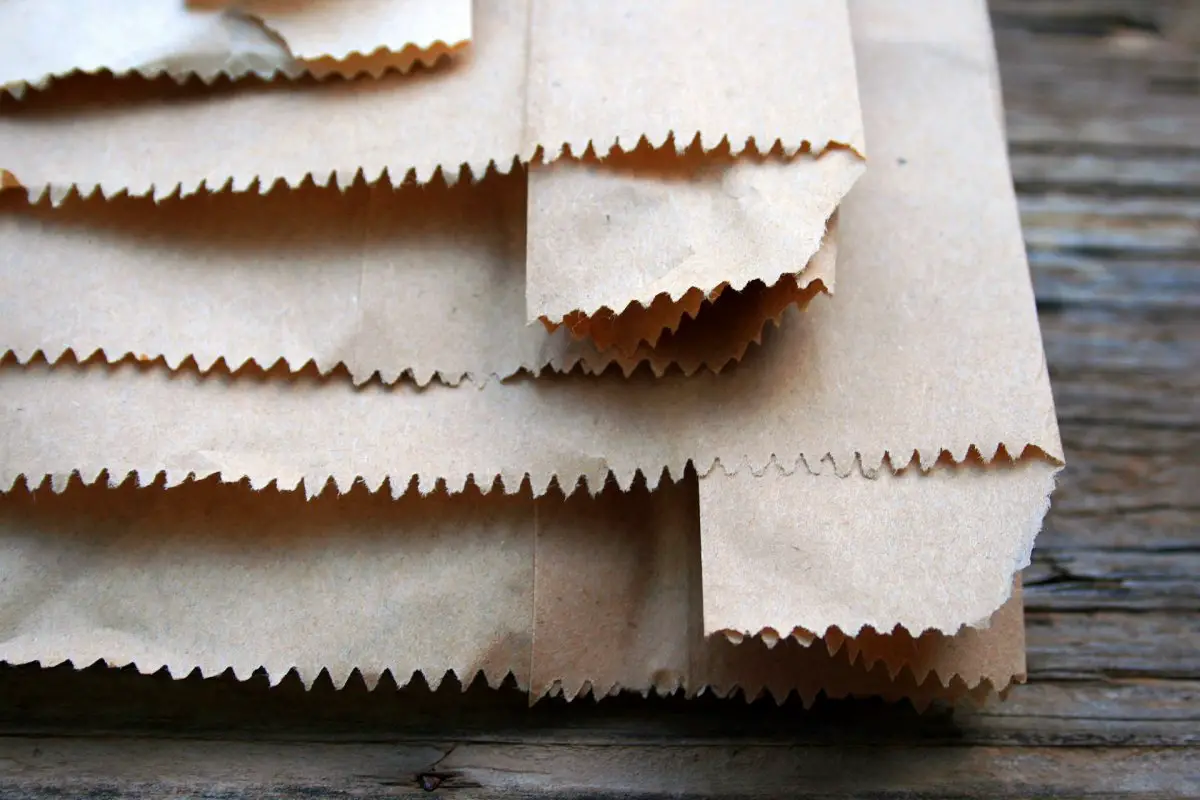Yes. Biodegradable paper bags are a great brown material you can add to your compost. A paper bag takes approximately 2 to 6 weeks to decompose.
Table of Contents
Is a Paper Bag Biodegradable?
Paper bags are made from a biodegradable material, which makes them perfect for composting. They are recyclable and can also be reused.
There is a catch, however. Manufacturing paper bags take more energy than plastic ones and chemicals during production.
These components make them harmful to the environment. In addition, you can only use them for so long before they begin to disintegrate. So although they are biodegradable, they aren’t built for recurrent use.
What Bags Can You Use for Compost?
Below are examples of biodegradable bags:
1. Grocery Brown Bags
You can find brown grocery bags in almost all supermarkets and department stores. They’re usually free and are made of kraft paper and then reinforced with another layer of paper.
They make excellent carbon material for compost.
2. Self-Opening Satchel (S.O.S.) Bags
S.O.S. bags, also known as brown paper lunch bags, help carry items like foodstuffs.
They are excellent compost materials since they’re manufactured from brown paper.
3. Merchandise Paper Bags
These bags are super high-quality and can carry all kinds of items. Many businesses use them for packaging, branding them with their logos and colors.
Merchandise paper bags are made with additional material, including paper, which makes them sturdy and durable.
Their only disadvantage is that not all merchandise bags can be composted due to these additional components.
4. Waste Paper Bags
These are a great alternative to plastic waste bags. You can use them to store all sorts of trash, even animal waste, e.g., dog poop.
Waste paper bags are 100% compostable because they break down quickly.
5. Gift Paper Bags
Gift paper bags are excellent for packaging presents for your loved ones on special occasions such as birthdays and anniversaries.
Most are compostable since they are made of paper.
6. Mailing Bags
Mailing paper bags are used for sending documents and small items by mail. They are popular with e-commerce stores because they’re safe and sturdy enough to withstand shipping to locations worldwide.
Most mailing bags can be used for compost, although you might have to remove the inner padded layer first for some.
Can You Put Brown Paper in Compost?
Yes, you can! Brown paper is made from biodegradable materials like plain paper and cardboard. These components allow it to decompose once you put it in your compost.
However, you can’t put all brown paper bags in compost. Some bags are made from an inorganic lining that doesn’t break down. You’ll have to treat them with organic waxes to make them compostable.
Similarly, some paper bags are treated with chemicals that make it hard to add them to your compost. They first must undergo treatment to separate the layers so that the organic material can be added to the rest of the biodegradable components.
How Long Does a Paper Bag Take to Decompose?
A paper bag takes approximately 2 to 6 weeks to decompose. They are made of biodegradable material that allows them to break down and get absorbed into soil.
This quality makes them perfect for compost-making.
How to Compost Paper Bags
You’ll need:
- Pitchfork
- Paper bags
- Shredder
- A compost bin
- An open space with plenty of fresh air.
Here are the steps to making a paper bag compost:
- Wipe down your paper bag to remove residual products from their initial use. Meat and dairy products get stuck to the lining and can result in complications such as foul odor and pest infestations.
- Cut up the paper bag into small bits. Shredding increases the surface area, which speeds up the decomposition process. It also makes mixing with the rest of the compost easier.
- Use your pitchfork to mix the shredded paper bag bits into the compost pile and ensure it’s well balanced. Regular turning will help speed up the decomposition and compost quicker.
Why Are Paper Bags Not Good for the Environment?
Paper bags use more energy to manufacture than plastic bags. In addition, they use harmful chemicals during production, which make them a hazard to the environment.
So What Is More Environmentally Friendly: Paper or Plastic Bags?
When it comes to sustainability, plastic bags are better than paper bags. They are easier to recycle and can be used for various purposes, such as composting. However, they are also more resource-intensive to produce.
According to studies, it would take around three to 43 times for paper bags to completely neutralize the impact of their use compared to plastic bags. However, due to the strength of paper fibers, it is only possible to recycle them once every three years.
On the other hand, plastic bags are made from high-density polyethylene (HDPE). Their manufacturing process produces fewer carbon emissions and harmful byproducts than paper bag production.
Although plastic bags may be sustainable in terms of reuse, people aren’t keen on recycling them. As a result, they end up becoming litter which in turn pollutes the environment.

